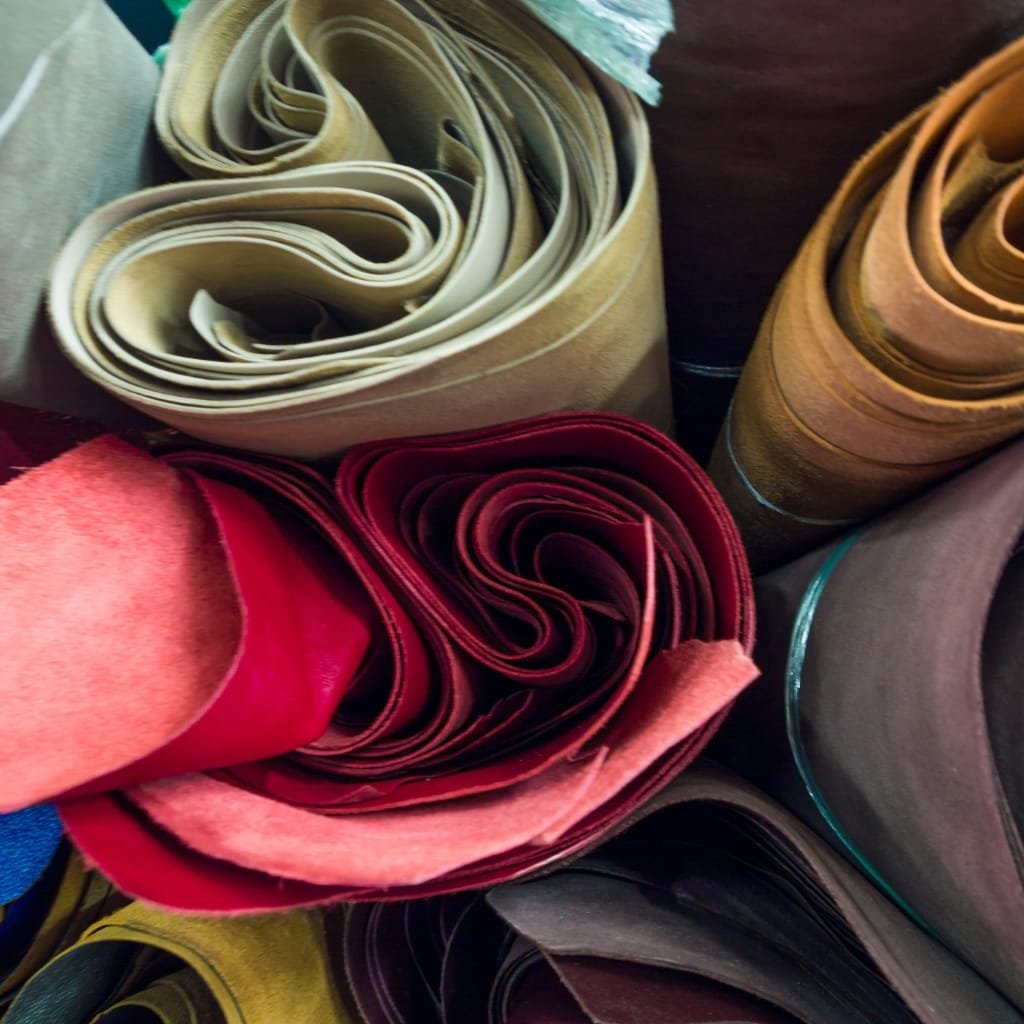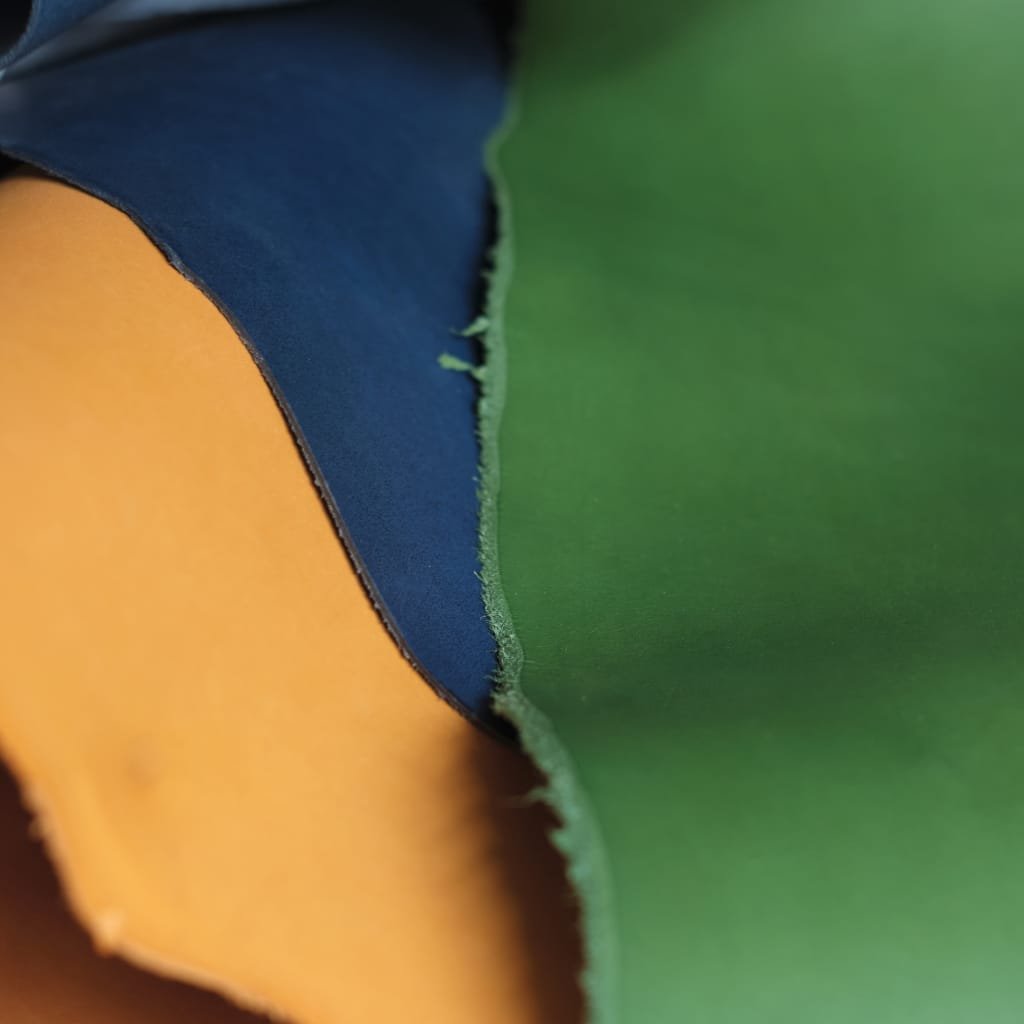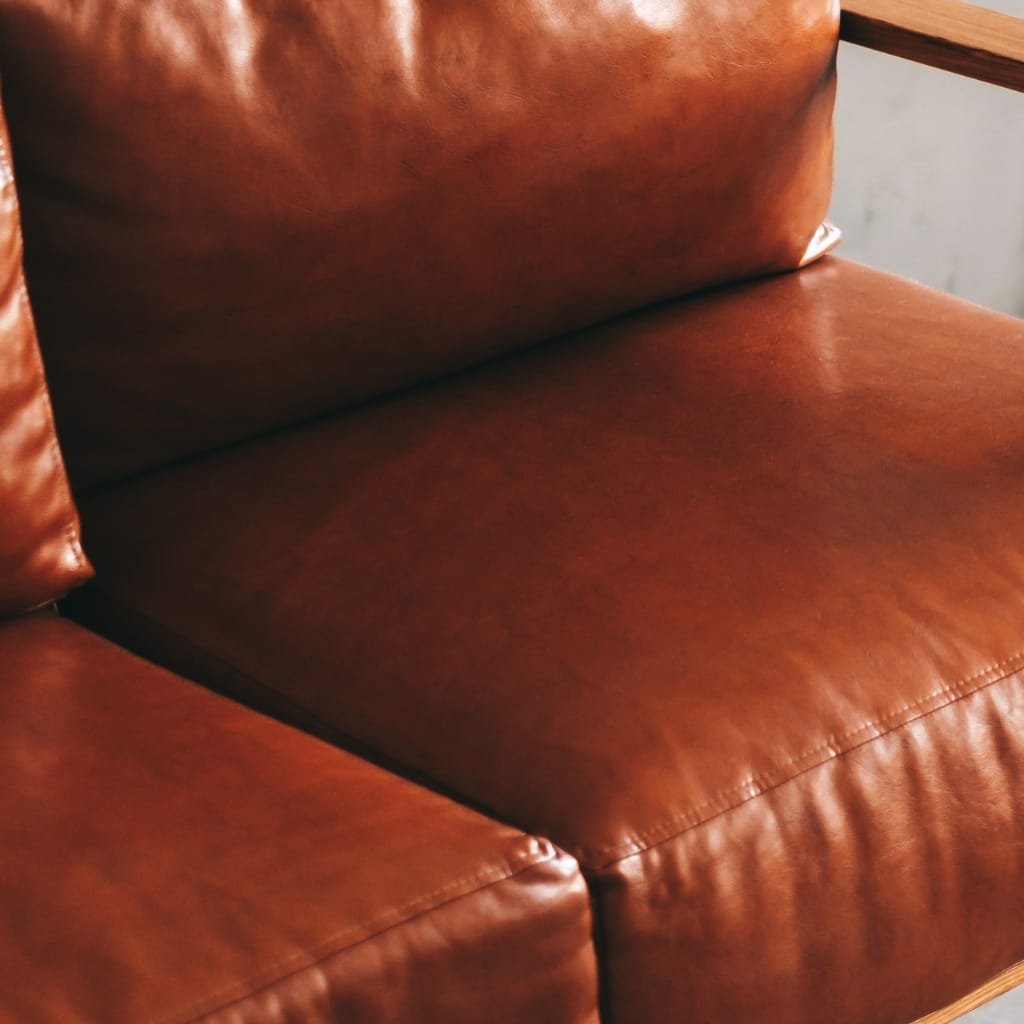The unique features of cow’s leather ensure its high demand in the fashion industry, furniture making, as well as in the crafting of functional goods. Apart from being durable, this material remains endlessly stylish. Cow’s leather jackets, handbags, boots, and belts are a testament to its timeless appeal. In addition, its grain and texture makes each piece distinct.
This guide covers everything pertaining cow’s leather. You will gain insights into its production, applications, maintenance, and the reasons for its lasting appeal.
What Is Cow’s Leather?
Tanneries obtain cow’s leather from the hide of cattle, making it one of the most popular leather types in the world. It is strong, thick and cowhide durable, making it a versatile material. Furthermore, cow leather attains a softer texture as it ages, without compromising on its durability.
Cow’s leather stands out for the unique charm it acquires over the years. Unlike synthetic products, it gains a rich patina and adds to the piece’s character, especially when well looked after.
How Cow’s Leather Is Made
The cow’s leather-making technique begins with the raw hide and the process entails distinct stages. While the approaches may differ, the core steps remain the same.
- Preparation – The hide is washed, cut, and salted to eliminate unwanted bacteria.
- Tanning – This stage prevents decay, stabilizing the protein structure while adding durability.Tanneries usually chrome-tan or vegetable-tan most cowhide to enhance its durability and finish.. 3. Manufacturers add colors during dyeing and finish the surface by polishing or texturing it based on the intended use. Skilled workers still handle much of the process, even though machines assist in production. This ensures quality, texture, and consistency.
Why Cow’s Leather Is So Popular
Leather of cow is incredibly versatile. Because of the unique grain, it ages beautifully. It’s tough enough for rugged use but also elegant for fashion. It also suits casual and formal styles.
Here’s why people love it:
- Strength and durability
- Natural insulation
- Resistance to wear and tear
- Long-lasting value
- Classic appeal
Cow’s leather is used in luxury items. Brands trust cow’s leather for its quality and timeless finish, making it popular.
Types of Cow’s Leather
Not all cow’s leather is the same. Let’s explore the different types:
Full-Grain Leather
This is the highest quality. Full grain leaves the entire grain intact and un-sanded, showcasing natural markings and aging gracefully. Full grain leather is often used in premium bags, boots and jackets.

Top-Grain Leather
This type has undergone light sanding and refinement. While retaining good durability, it offers a more polished look. It is more resistant to staining compared to full-grain leather.

Corrected-Grain Leather
This type has undergone repairs to remove visible flaws. Manufacturers apply a synthetic grain to the surface, making it a popular choice for affordable furniture.

Split Leather
This split leather comes from the bottom portion of the hide. While weaker, it is still good for suede or bonded items due to its lower durability.

Common Uses of Cow’s Leather
There is a good reason cow’s leather is present in various industries. It is especially well suited for products with heavy use due to its durability.
Fashion and Apparel
In the form of jackets, belts, and shoes, cow leather is a staple in peoples wardrobes. Adverse weather conditions do not pose a threat as cowhide is thick and provides ample protection, keeping the wearer stylish.

Furniture and Interiors
Furniture makers extensively use cow’s leather in items like leather sofas and leather chairs. It is also helps provide luxurious beauty and durability to any space. Leather also has the ability to age beautifully in home decor.

Automotive and Aviation
Seats and interiors of luxurious automobiles are often equipped with cow’s leather. It adds comfort, class, and resilience to the vehicle.

Equestrian Equipment
Saddles, bridles, and tack use cow leather because of its weather and pressure handling capabilities.
Maintenance of Cow’s Leather
Attention enhances the look of cow leather and increases its longevity. Leather is tough, but nonetheless, attention is necessary.
Regular Cleaning
Cleaning leather starts with wiping dust with a soft cloth. For deeper cleaning, use damp cloths and leather detergents. Soaking and scrubbing should be avoided.

Leather Conditioning
Leather conditioners should be applied every quarter. This prevents drying and cracking, allowing the leather to remain soft and supple.
Moisture Protection
Moisture can warp cow leather and weaken its fibers.If the leather gets damp, let it dry at room temperature and keep it away from direct heat
Storage
Leather bags and shoes should be kept in dust bags. Store leather items in cool dry places to maintain their quality.
Aging of Cow’s Leather
Cow leather is loved for its beautiful aging. Over time, the leather darkens and develops a distinct patina. Scratches, which occur with time, add to its charm. Most leather enthusiasts believe that aged leather narrates a story.
Well-maintained cowhide can last a person multiple decades. In addition to this, when it comes to character, vintage leather items tend to hold a lot of their value.

Ethics and Sustainability
Cowhide is a leather by-product and is often discarded by the meat industry. Not only does this save money, cowhide leather production can help simplify the process.
Despite this, concerns can be raised regarding the process of leather tanning. The good news is that a large number of tanneries are introducing green policies. An example of this is vegetable tanning which uses tree bark.Additionally, the longevity of leather means its lifespan extends far beyond other materials, thereby reducing the waste produced over time. That makes it more sustainable compared to fast fashion.
How to Identify Real Cow’s Leather
To avoid fakes, keep an eye on the following:
- Smell: Leather gives off an earthy, rich scent.
- Touch: Its texture is supple yet robust, displaying natural inconsistencies.
- Sight: Real cowhide features grains and wrinkles.
- Costs: Effective leather brands sell cow leather.
Always check the product label or description. Most brands do not hesitate to label their product as “genuine cowhide” or “top-grain leather.”
Is Cow’s Leather Worth It?
Without a doubt. Your investment on cow’s leather guarantees unmatched longevity, comfort, and style. In every piece, be it a jacket, a wallet, or a chair, the leather always pays back in performance and charm.
The sturdiness and classic timeless design ensures its ideal investment despite seeming expensive at first purchase.

Conclusion
Cow’s leather remains favored for a few reasons, its strength, adaptabilty, style and only getting better with age. A leather jacket with aged character makes a great companion piece on any outfit. The versatility of leather coupled with its charm is what makes it reliable.
From casual work boots to formal leather jackets, this material is one of a kind. With appropriate care, cow leather can last you years, if not decades.
If you are on the lookout for a material that strikes a balance between sophistication and resilience, cow leather makes the best option.
FAQs
❓What is cow’s leather used for?
Cow’s leather is used in fashion, furniture, automotive interiors, and accessories. People rely on it for jackets, shoes, sofas, belts, bags, and more. Because of its strength and versatility, it works well in both luxury and everyday products.
❓Is cow’s leather real leather?
Yes, cow’s leather is real and natural leather made from cowhide. Unlike synthetic or faux leather, it offers long-lasting durability and develops a beautiful patina over time.
❓How can I tell if leather is made from cowhide?
To identify cow’s leather, check for a grainy texture, a rich natural scent, and slight imperfections. Most real cowhide leather feels firm yet flexible. Also, genuine products often include labels stating “genuine cowhide” or “top-grain cow leather.”



